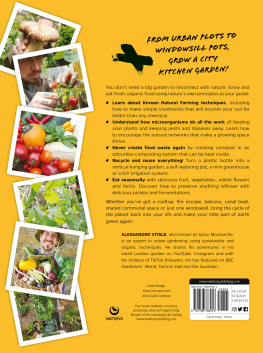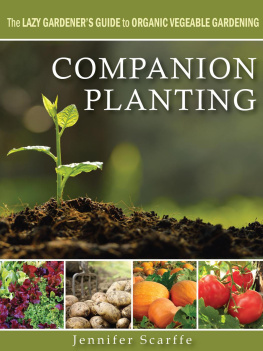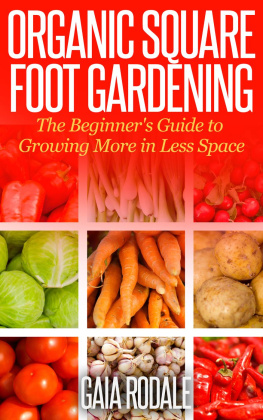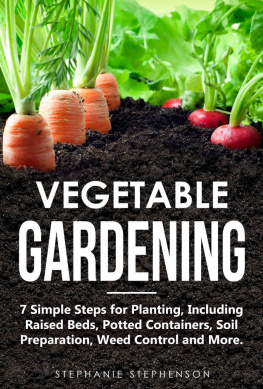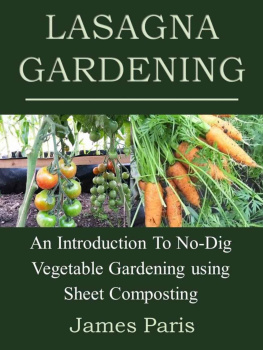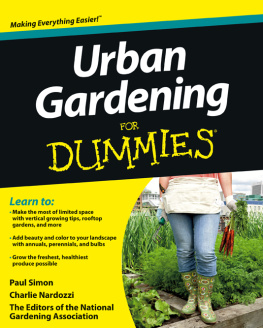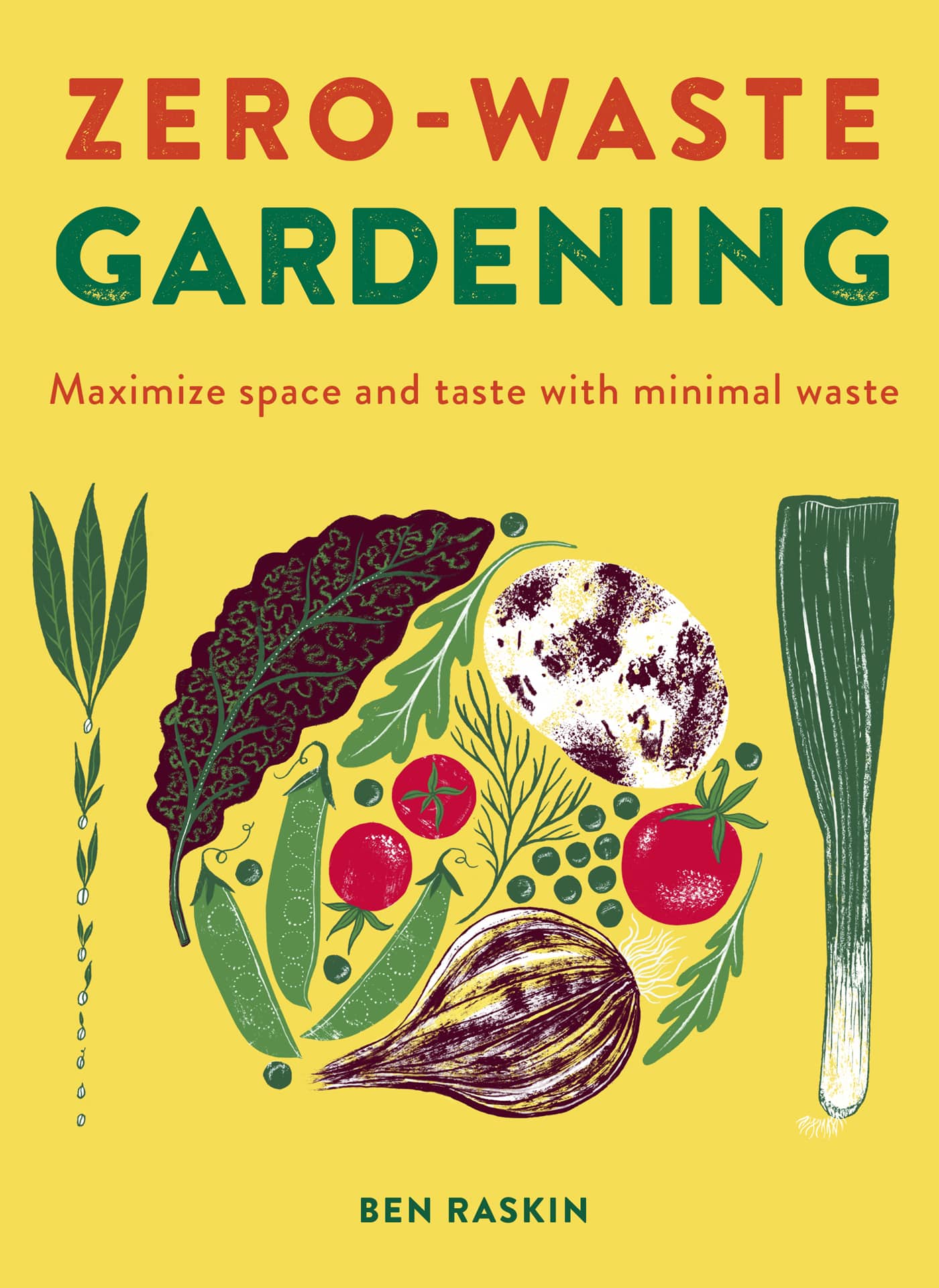Contents
Page List
Guide
Cover
ZERO-WASTE
GARDENING
Maximize space and taste with minimal waste
BEN RASKIN
Illustrated by Alice Pattullo
CONTENTS
Introduction
THE PRINCIPLES OF ZERO-WASTE GARDENING
Zero waste is a popular term at the moment as we all finally wake up to the fact that our planet does not have infinite resources. Whether we can truly live in a circular sustainable cycle of resource use with our current population is still a matter of debate, but what is clear however is that we can all do more to help reduce our impact on climate and nature.
I am not going to pretend that you will become self-sufficient in fruit and vegetables, or will reduce your carbon footprint to zero. Youd probably need to work full time on about 2 hectares/5 acres to achieve that. However you can produce great tasting fruit and veg to supplement your bought-in food, and enjoy growing and cooking with produce from your own effort. Once we realize just how much of a plant we can eat and currently dont, we can perhaps make better use of the produce we buy as well as those we grow ourselves.
Where does waste happen?
BEFORE HARVEST
Not usually accounted for in food-waste figures, seeds that dont germinate are still waste. Weve bought the seeds, spent time and effort sowing them, and probably watered them. All stages in the growing process have opportunities to lose a crop; pests, disease, drought, flood or even competition from weeds might all lead to crop failure. If we can improve our raising and growing skills we can reduce waste.
IN STORE
Most produce needs to be stored for some period of time, sometimes just for a few days or, for crops like potatoes or apples, for many months. During that time some food will spoil. Improved storage conditions can reduce waste. This is where freezing, drying and pickling come into their own, drastically increasing the time we can safely store our harvest for.
AT HARVEST
In commercial production, crop that does not meet the buyers required specifications is graded out at harvest. Produce can be graded out on appearance, size or shape. How much waste and what the specification is depend on who is buying it. Local box schemes will have more flexibility on shape and size for instance than supermarket buyers. When growing our own we can reduce that waste to almost nothing. If Ive spent the time and effort growing it, I am going to use all I can, whatever it looks like. Using bits of the plant like carrot tops or vine leaves that you might not have thought of eating is another way to get more value and less waste from your crops.
IN THE KITCHEN
Eating everything you cook and monitoring what is in your fridge are good ways to reduce waste. My parents had lived through rationing in and after the Second World War, and leaving food on my plate was a definite no-no. With the planet in its current state, this is a sensible attitude.
OTHER INPUTS
As well as the actual crops, are there other ways we can become zero waste in our garden? Using recycled materials to make raised beds or trellises, using hand tools rather than petrol-driven ones, and maximizing renewable inputs like sunshine, water, composts and manures, are all ways to minimize the impact of our gardening efforts.
Space, taste and waste
Most of us have limited space for growing food. Choosing what to plant and making the best use of it once we have grown it can be tricky. How big do plants get? How much food do you harvest from each plant? What tastes better if you grow it yourself? We explore these questions, and also which bits of plants we can eat but dont., often even throwing them away. From carrot tops to cucumber flowers, fennel seeds to raspberry leaves, we will look at neglected foods to help you get the most from even a small plot.
SPACE
Zero-waste gardening means good planning; for each feature crop, there will be a guide to how much space one plant takes up and the yield you can expect. This will help you grow as much as possible of the crops you like, in the space you have. Well also look at interplanting, where small quick crops can be squeezed between slower-growing ones, and at what plants grow up and be trained on walls or trellis to maximize your space.
TASTE
One of the great benefits of growing your own food is that it often tastes better than bought food. Which are the crops that really deliver flavour when you grow your own? Leafy vegetables are a must as they deteriorate so quickly once picked. Tomatoes, corn and peas are just a few of the others that are worth finding space for in your zero-waste garden. Well also explore the different ways you can store and preserve crops for maximum quality and flavour. Freezing, drying, pickling and fermenting can help hang on to those gluts until you are ready to eat them.
WASTE
It is important to grow what you need and then pick and eat it. If you go away in the summer, dont grow crops that fruit only while you are on holiday. What is the best crop spacing to grow the right size plant without leaving gaps? Well also how to get free plant food, capture maximum energy from the sun, and gather nutrients from waste sources like coffee grounds.
Chapter one
SPACE
Garden space is often limited, while the choice of what to grow is almost infinite. Crop planning, tricky and time-consuming for all, is especially daunting for those starting out. This chapter aims to help you make those planting decisions.
Filling every available space can work in the short term, but we also need to think long term. Good crops need healthy soil, and good ground preparation and an understanding of crop rotations can help with this.
A zero-waste garden is about minimizing inputs (fertility from outside the garden; costs; effort) and maximizing outputs by capturing all the sunlight and moisture we can. And we aim to use as much produce as possible.
Refer to the yield pages to see what might affect how much you actually get. As well as your own skill and experience, weather, soil and variety can all impact yields, as can pests and diseases.
Planning is key: successional sowing, training vertically to grow up as well as out Interplanting and undersowing are worth doing to gain space and minimize weeds. The How to Choose pages give ideas on prioritizing which plants to grow.
Keeping records of what does well and when, is a great way to learn. Each year can be very different, and taking notes will help you to plan in future years.


